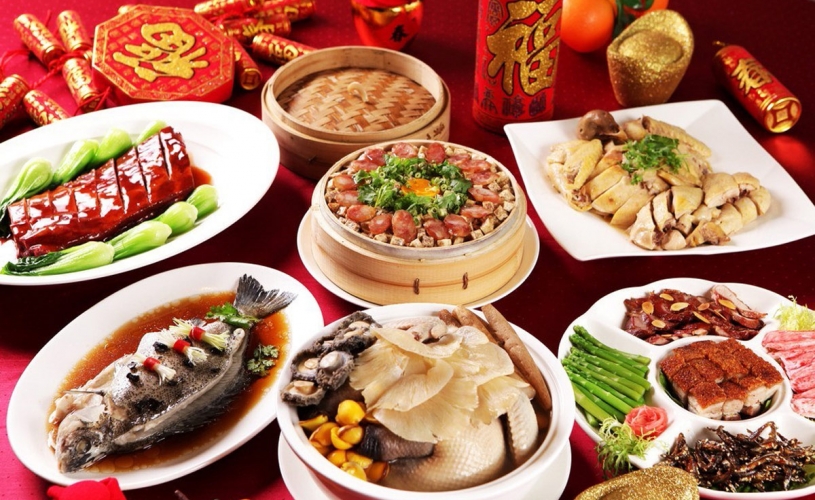
Chinese food is arguably one of the most diverse (and delicious) cuisines on the planet. Ranging from rice and noodles to roasted duck and lamb skewers, every dish is deeply rooted in history and tradition. With that in mind, it’s no surprise that food plays a major role in Chinese New Year celebrations. Here are seven foods that are thought to bring you luck and good fortune in the Year of the Rooster.

Since the Chinese word for fish sounds the same as the word for “abundance,” eating it whole allows for a surplus of all things good. And if you don’t mind spice, the Hunan-style perch at Hunan Country Cuisine isn’t just tasty but also a pretty good deal at ¥60.
Find it: Hunan Country Cuisine, 168 Wulumuqi Lu (near Anfu Lu), 乌鲁木齐路168号, 近安福路, 6437 0952

Apparently egg dumplings look a bit like the old Chinese currency. But they taste way better. Do yourself a favor and eat the pork-filled treasures in Elixir Health Pot’s savory, sinfully addictive broth.
Find it: Wulao Elixir Hot Pot, 2 Hengshan Lu (near Taojiang Lu) 衡山路2号甲香樟花园内, 近桃江路, 5456 1489

Translated to “eight treasure rice,” this sweet mound of sticky rice mixed with dried fruits and nuts symbolizes the reunion of family. Pick one up at Wang Jia Sha on Nanjing Xi Lu for ¥15 and share it with your loved ones for a sweet year ahead.
Find it: Wang Jia Sha, 805 Nanjing Xi Lu (near Shimen Yi Lu), 南京西路805号, 近石门一路; 6253 0404

Spring rolls remind people that spring is coming, which makes people happy. They also slightly resemble gold bars, which also makes people happy. Try the yellow croaker spring rolls at Jian Guo 328 and you’ll be downright delirious.
Find it: 328 Jian Guo, 328 Jiangguo Xi Lu (near Xiangyang Nan Lu ), 建国西路328号 (近襄阳南路), 6471 3819

Image courtesy of Tashcakes
A glutinous rice cake, which translates as “Chinese New Year’s cake,” is obviously a very popular food during this time of year - mostly because “nián gāo” is a homonym for “higher year.” The Chinese word nián (sticky) sounds exactly the same as the word for year (also nián), and the word gāo (cake) has the same sound as the word for tall (yes, also gāo). Traditionally, the cake is eaten to “raise oneself higher/taller in each coming year,” or “niánnián gāoshēng.”
Find it: You can purchase niángāo from most supermarkets.

Another treat made from glutinous rice flour, yuán xiāo is traditionally eaten during the Lantern Festival. Cooked and served in boiling water (which gets quite sweet and almost syrupy), the sticky dumplings range in size and fillings (think black sesame paste, red bean, fruit preserves or ground peanuts). Called yuán xiāo in the north of China and tuán yuán in the south, the round balls symbolize family togetherness.
Find it: Ning Bo Dumplings, 112 YuYuan Lu (Near Yuyuan Garden), 豫园路112号, 6373 9458

Image courtesy of Huffington Post
This is an easy one. Oranges, tangerines and pomelos are said to bring good fortune to those who eat (or even display) them. Like many other “lucky” foods, these fruits are regarded as so because they are homonyms. The Chinese for orange/ tangerine is chéng, which sounds the same as the word for success. And the word for pomelo (yòu) sounds like “to have,” except for the tone, and exactly like “again” (yòu). Because of this, eating pomelos is thought to bring continuous prosperity – and the more you eat, the more wealth it will bring you during Chinese New Year.
Find it: Supermarkets, wet markets, on the street--anywhere!